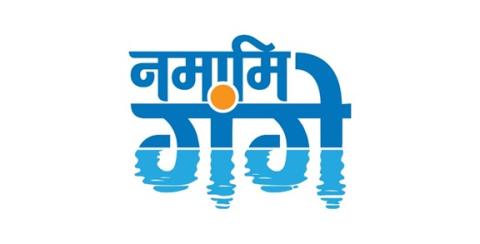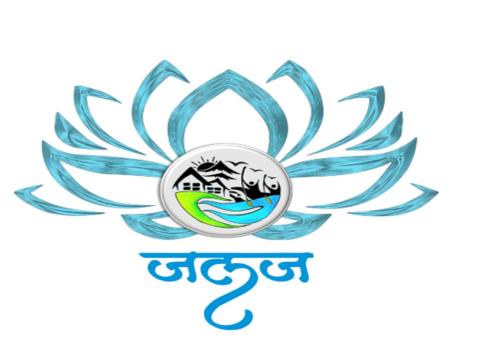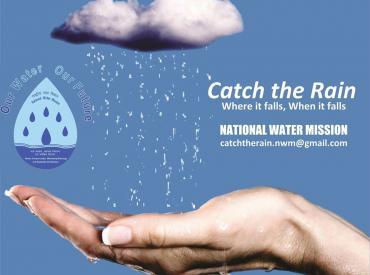


In G. Asok Kumar’s tenure as Director General, National Mission for Clean Ganga, there has been an enhanced focus in making Namami Gange Program sustainable, by pitching it as peoples’ movement, as envisioned by Hon’ble Prime Minister Shri Narendra Modi. PM Modi in his address at the 1st National Council Meeting on 14 December, 2019 at Kanpur exhorted to work on Arth Ganga to make the river-people connect through an economic bridge. In 2022, 6 verticals of ArthGanga were put-forth to strengthen the river people connect – viz- (1) Zero Budget Natural Farming – to promote chemical fertilizers free natural farming using traditional Indian practices, promoting “Gobar Dhan” etc to increase NET-INCOME of farmers (2) Reuse and Monetisation of Treated water and sludge from STPs to reduce consumption of potable water for non-potable purposes and to increase the revenue of Urban Local Bodies with the sale of treated water and sludge (3) promotion of livelihood opportunities for the people on the banks of Ganga river- by starting JALAJ model for sale of goods like products from ganga basin like local weaves, sarees, local food produces etc and improved fish catches etc for increased income generation for local people (4) Promotion of Cultural heritage and tourism – with extensive mapping of tangible and intangible heritages on the banks of the river and promoting responsible tourism, supplying house-keeping items and services to hotels in tourist destinations like Rishikesh, Haridwar etc; acting a tourist guides, providing home stay facilities etc to augment the income of people (5) People’s participation in activities like discussions and preparations of River Basin Management (RBM) Plans, District Ganga Plans, cleaning up of ghats, Ghat par Yoga, Ghat pe Artis, Ghat par Haat etc (6) building up of institutions and capacities of stakeholders for eg formation of District Ganga Committees and holding DGC forum meetings (District Ganga Committees 4M-Monthly, Mandate, Minuted and Monitored meetings), formation of River Cities Alliances (RCA) and Global River Cities alliance; preparation of Urban River Management Plans (URMPs), building capacities of Municipal officials and stake holders to prepare good bankable DPRs, URMPs etc. River Cities alliance (RCA), which was started on 25 November 2021, with 20 cities on the basin of River Ganga has now gown to an organization with 142+ cities on the banks of various Indian rivers. It held its first meeting –DHARA in February, 2022 at Pune with over 105 river cities/towns participating. On 6 December 2023, at the CoP 28 in Dubai, Asok Kumar on behalf of RCA signed the Memorandum of common Purposes (MoCP) with the 124 member MRTCI – (Mississippi River Towns and Cities Initiative ) of USA. Under his aegis, on 10 December 2023, at the Cop28 in Dubai, Global River Cities Alliance (GRCA) was formally launched with Ministers/Representatives of 11 countries and International funding agencies participating. Asok Kumar was instrumental in designing the logo of Arth-Ganga, which encompasses the spirituality (reminds of Om and Ganesha), Rupee symbol to show the economic connect and a saffron dot representing a rising sun to show economic prosperity or a Bindi representing Nari shakti, a key element in Arth-Ganga. He created the tag lines in Hindi "Behti Nadi, Behtar Jeevan" and in English, "Banking on River Ganga", the pun intended!
(1) Zero Budget Natural Farming – to promote chemical fertilizers free natural farming using traditional Indian practices, promoting “Gobar Dhan” - cow dung and cow urine based manures etc to increase NET-INCOME of farmers. This is an important intervention, as runoff water from the agricultural fields on the banks of rivers carry chemical fertilizers applied in large scale by the farmers. This non-pointed pollution source is very difficult to be stopped and treated. Moreover, these chemicals adversely affect the aquatic animals like dolphins, fishes in the river and other biodiversity in the basin and also interfere with the proper operation of STPs using aerobic processes for treatment of sewage, set up in cities and towns along the banks of the river.
Government of India, under the Ministry of Agriculture and Farmer Welfare is promoting Bharatiya Prakritik Krishi Paddhati (BPKP) or traditional agriculture practices, which are different from organic farming. Under this, traditional farming symbiotically using the friendly microbes of the soil and enriched by cow-dung & urine based formulations are promoted. This results in very low cost of cultivation to farmers, and hence increased net-income to the farmers, besides being very environmentally friendly. It also helps to increase soil moisture and uses less water.
NMCG signed MoU with Shakar Bharati, a co-operative based organization, on 16 August 2022 to set up 75 Ganga Sahakar Grams; to organize massive training programs for farmers on natural farming and to set up FBOs (Farmer Based Organizations) to help market their produce. In September 2023, NMCG set up its first commercial, retail outlet for these natural products at the JALAJ Awareness and Marketing (JAM) Center at Dilli Haat in New Delhi. In the first three months of its operation almost Rs 13 lakh worth products were sold at this outlet.
NMCG also signed a MoU with the Ministry of Agriculture and Farmer Welfare on 20th September 2022, Art of Living group on 21st October 2022, Pathanjali on 31st October 2022, to organize training programs for farmers. Under these MoUs, many training programs were organized training over 10000 farmers. Exposure visits of farmers to Subhash Parlekar’s farms in Nasik and Acharya Devvrat’s farms in Gurukul Kurukshetra were also taken up in 2022.
56 submissions were received for a call of Expression of Interest (EoI) floated in October 2022 for promotion of Natural farming in Ganga basin with the objective of Capacity Building of farmers in Natural Farming.
(2) Reuse and Monetisation of Treated water and sludge from STPs to reduce consumption of potable water for non-potable purposes and to increase the revenue of Urban Local Bodies with the sale of treated water and sludge. A “National Policy Framework for safe Reuse of Treated Water” was published by NMCG in association with international experts from GIZ (Germany) under Indo-European Water Program in September 2022. It was sent to Chief Secretaries of all states and other stakeholders for further action. It was formally released at the State Water Ministers’ conference in Bhopal on 6 January 2023. NMCG has started supplying 8 MLD treated water for the usage of Indian Oil Corporation Limited (IOCL) at its refinery in Mathura, Uttar Pradesh from April 2023 onwards. MoU was signed with Ministry of Power on 22 December 2022 for using the treated water from STPs in identified Thermal Power plants within 50 Kms radius of STPs. 23 Power Plants of NTPC were identified and DPRs for 3 have been prepared.
MoU with Ministry of Railways was also signed and discussions taken forward with DRMs of Prayagraj, Agra and Jhansi divisions for the use of treated water in Railways.
Farmers are also motivated to use treated water for irrigation. This will reduce the abstraction of good water for irrigation and will lead to increased flow of water in the rivers. Farmers of Jagjeetpur in Rishikesh are using the treated water from the 68 MLD STP for irrigation.
Necessary modifications in the Authority order to allow treated water into irrigation canals has been moved in December 2023 for notification.
Characteristics of Sludge from various STPs were scientifically studied by IIT, Roorkie and IIT, Kanpur and papers presented in 2023. EoI was called for use of sludge in various sectors and 52 stakeholders have responded. The sludge is being contemplated as a soil conditioner for enrichment of top soil or as a natural fertilizer after appropriate fortification.
Sale of treated water to industries and sludge will help to augment the revenue of fund starved Local Bodies (Urban and local) in the Ganga basin districts.
(3) Promotion of livelihood opportunities for the people on the banks of Ganga river- by starting JALAJ model for sale of goods and products from Ganga basin like local weaves, sarees, local food produces etc and improved fish catches etc for increased income generation for local people. On 16 August, 2022 in association with Wildlife Institute (WII) of India 29 JALAJs out of the planned 75 JALAJs were launched. By December 2023 more than 45 JALAJs are functioning. From 17 September 2023, a JALAL Awareness and Marketing (JAM) Center started functioning at “Dilli Haat” near INA Market, New Delhi, providing markets for the farmers doing Natural Farming on the Ganga Basin and for selling the products made by women Self Help Groups (SHGs) on the Ganga Basin. It has done business of over 17 lakhs till December 2023, since its launch in September 2023.
On 22 April 2023, launched “Ganga Bhog- Gangotri se Ganga Sager” to promote livelihood generation among the Women SHGs on the banks of the river centered on the concept of “5MAs”- MAa (River Ganga), MAndir (Temples), MAhila (women); MAtti (land, soil) and MAdhu-MotaAnaj (Honey and Millets). The idea was to include Mitai or sweets made by Women folk using Millets, Honey procured from local soil to be given as Bhog or Prasad (offering) in the temples on the Ganga river basin.
Under the fish ranching program started by NMCG in association with CIFRI (Central Inland Fisheries Research Institute) about 93 lakhs (9.3 million) Indian Major Carp fingerlings were released into the river- 4 million in the 2022-23 period- to conserve fish diversity, increase the number of indigenous fish species and thereby increasing the prey base for river Dolphin and ensure livelihood for fishermen.
(4) Promotion of Cultural heritage and tourism – with extensive mapping of tangible and intangible heritages on the banks of the river and promoting responsible tourism, supplying house-keeping items and services to hotels in tourist destinations like Rishikesh, Haridwar etc; acting a tourist guides, providing home stay facilities etc to augment the income of people .
Over 100 youth from the towns on the banks of the River Ganga has been trained in doing Ganga Artis- or paying Obeisance to River Ganga. This is a traditional concept to increase reverence to the river. A detailed Standard Operating Procedure (SoP) for the ritual was prepared and they were given proper uniforms and equipment to perform the Arti. These trained youth have started Artis in over 60 ghats or river fronts after their training in August/September 2023.
NMCG has sponsored INTACH to study and publish an authentic document on the tangible and intangible cultural heritage of the Ganga Basin. The voluminous study was completed in December 2022 and two books were published. The book is attached in the publication menu of this website.
(5) People’s participation have been increased considerably in all the NMCG programs in the last 2 years, ever-since Asok Kumar has taken charge as DG. Stake holders were actively involved in the discussions and preparations of River Basin Management (RBM) Plans, District Ganga Plans, Cleaning up of ghats, Ghat par Yoga, Ghat pe Artis, Ghat par Haat etc. International Yoga day was celebrated on June 21 of 2022 and 2023 as “Ghat Pe Yoga” or Yoga at the Ghats. This saw over1 million people participating all along the Ganga basin. Weekly village markets –Ghat pe Haat- also started in many Ghats to encourage people visiting the river banks and inturn help to keep them clean.
Cadres of 45,000 Ganga Doots; 3000 Ganga Praharis, 700 Ganga Mitras were developed to involve and engage local youth in Ganga rejuvenation and biodiversity protection activities.
MoU was signed on 5 June 2023 with Chancellors/Vice Chancellors of 50 universities to involve college students in the activities of Students in Ganga Rejuvenation activities. Monthly webinars “Igniting Young Minds: rejuvenating rivers” are being held on every 1st Wednesdays of a month.
(6) Building up of institutions and capacities of stakeholders: Asok Kumar has taken extraordinary efforts to build institutions and their building their capacity for sustenance of the programs initiated by NMCG. These include eg formation of District Ganga Committees (DGSs) and holding “DGC forum meetings” (District Ganga Committees 4M-Monthly, Mandate, Minuted and Monitored meetings), formation and Expansion of River Cities Alliances (RCA) and Global River Cities Alliance; preparation of Urban River Management Plans (URMPs), building capacities of Municipal officials and stake holders to prepare good bankable DPRs, URMPs etc.
On 6th April 2022, Asok Kumar started the concept of DGC forum meetings- a mandated monthly fixed meetings of District Ganga Committees earlier. 139 of them never had meetings till this concept was launched with a portal to Ganga District Performance Monitoring System (GDPMS) to upload the minutes of the monthly meetings, which are monitored and action taken regularly. From near ZERO at the start in April 2022, till 15 February 2024, so far 2594 meetings were held and their MoM (Minutes of Meetings) uploaded. The meetings held under the chairmanship of District Magistrate or the head of the district administration on the banks of river Ganga, have been given 3 major agenda to deliberate. First is the “National or NMCG agenda” to discuss on the projects being taken up or to be taken up in the district to keep the river clean, monitor the drains out falling into the river, polluting industries etc. The second agenda is about the local issues like maintenance of ghats, natural farming, local festivals on river banks keeping them clean etc. The third is the “seasonal agenda” which deals with seasonal issues like “Catch the rain” campaign during monsoon, annual festivals, melas etc and to ensure that the river and its basin are kept clean. There has been a tremendous involvement of the local administration in management of the river. This decentralized involvement of local administration and stakeholders have attracted the attention of National Green Tribunal, which has started direct dialogues with the DGCs. They have been asked to prepare District Ganga Plans etc and oversee its implementation. This is a great contribution of Asok Kumar to ensure sustenance and quality of the efforts done by Namami Gange to clean and rejuvenate River Ganga and its tributaries by actively involving local stakeholders and ensuring decentralized monitoring of the programs.
Along with this, the concept of Urban River Management Plans(URMPs) to bring river management as a serious element of urban planning has also started with the help of National Urban River Management Institute.(NIUA)
Asok Kumar expanded the River Cities alliance (RCA), which was started in association with NIUA on 25 November 2021, with 20 cities on the basin of River Ganga, to an organization with 142+ cities on the banks of various Indian rivers. It held its first meeting –DHARA in February, 2023 at Pune with over 105 river cities/towns participating. 3 URMPs have been prepared and efforts are underway to prepare 60 URMPs in by March 2025.
On 6th December 2023, at the CoP 28 in Dubai, Asok Kumar on behalf of RCA signed the Memorandum of Common Purposes (MoCP) with the 124 member MRTCI – (Mississippi River Towns and Cities Initiative ) of USA.
Under his aegis, on 10th December 2023, at the CoP28 in Dubai, Global River Cities Alliance (GRCA) was formally launched with Ministers/Representatives of 11 countries and International funding agencies participating. This is the first time such an alliance was launched in the world.



 ,
, 
 ,
, 

 ,
,  ,
, 
 ,
, 



